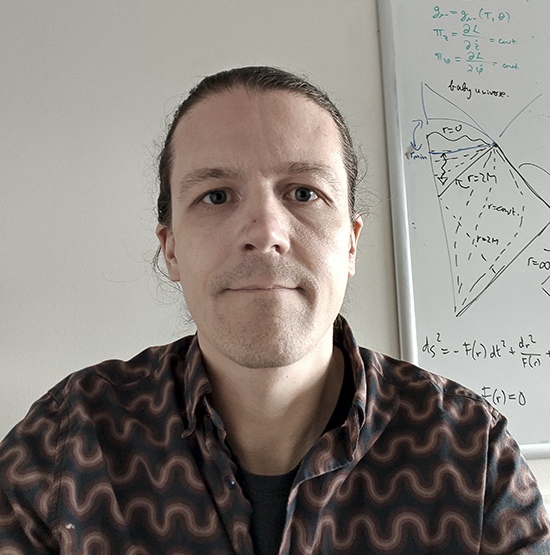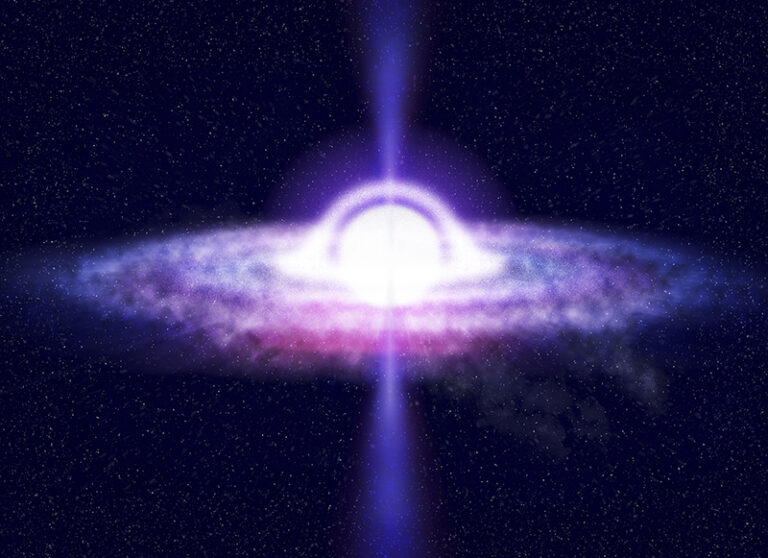
From Black Holes to White Holes: A New Vision of Cosmic Time
What if black holes—long feared as the universe’s ultimate traps—aren’t dead ends at all, but doorways to new realms of space and time? This provocative question drives a groundbreaking theory co-authored by Dr. Steffen Gielen of the University of Sheffield and Dr. Lucía Menéndez-Pidal, suggesting that black holes might transform into white holes, ejecting matter, energy, and perhaps even time itself back into the cosmos. Far from marking the end of physics, the mysterious core of a black hole could be where something extraordinary begins.
Published in Physical Review Letters, their research connects this cosmic evolution to dark energy—the enigmatic force accelerating the universe’s expansion—offering a fresh perspective on time itself. Using quantum mechanics, the team proposes that a black hole’s heart, often thought to be a point of no return, might instead be a quantum transition zone shaped by subtle fluctuations and cosmic forces. In this model, time doesn’t halt—it evolves, potentially giving birth to a white hole. We spoke exclusively with Dr. Gielen to unpack this radical idea and its implications for some of physics’ deepest mysteries: Could time have no true beginning? Might dark energy serve as a universal clock? And could this bridge the chasm between general relativity and quantum mechanics? Step with us beyond the event horizon into a new frontier of cosmology.
From Cosmic Endings to New Beginnings
“Black holes are extreme predictions of Einstein’s general relativity, our theory of gravity on vast scales,” Dr. Gielen explains. These gravitational giants famously pull everything inward, offering no escape beyond their event horizon. White holes, by contrast, are their theoretical opposites—regions that expel matter into the universe but cannot be entered.
“It’s a complete flip,” he says. “A white hole throws things out, but you can’t get in.” While white holes have lingered as mathematical curiosities within Einstein’s equations for decades, this study offers a mechanism: quantum mechanics might enable black holes to morph into white holes over time.
The Quantum Bridge Between Theories
This theory tackles a central challenge in physics—uniting general relativity, which governs the cosmos, with quantum mechanics, which rules the subatomic world. “One of my driving goals is to connect Einstein’s gravity with quantum theory,” Dr. Gielen notes. “It’s a grand unsolved puzzle.”
In classical physics, a black hole’s core collapses into a singularity—a region where gravity reaches extremes that defy our current models. But quantum mechanics suggests a different fate. “In quantum systems, everything keeps evolving,” Dr. Gielen says. “You start with an initial state and can predict what’s next.” This principle clashes with the idea of time ending at a singularity. Instead, their model posits that a black hole transitions into a white hole, preserving time’s flow through quantum processes.
A Quantum Dance of Cosmic States
Intriguingly, this shift involves a quantum “superposition”—the object exists as both a black hole and a white hole simultaneously. “It’s always a bit of both,” Dr. Gielen explains. “Over time, it transitions from ‘mostly a black hole’ to ‘mostly a white hole.’” This mirrors Schrödinger’s famous cat, alive and dead until observed, but on a cosmic scale—a gradual evolution from one state to another.
Dark Energy as a Cosmic Timekeeper
The theory also reimagines time’s relationship with dark energy. “In general relativity, time varies by observer—think of Interstellar, where it slows near a black hole,” Dr. Gielen says. “But quantum theory needs a steadier measure.” Enter dark energy, pervasive across the universe. “It’s everywhere, so it could act as a clock,” he suggests. “Its evolution might define time universally.” This bold link ties the fate of black holes to the universe’s accelerating expansion.
One-Way Trips to New Realms
What of an adventurer falling into a black hole? “You’d pass through and emerge from a white hole into what looks like a different universe,” Dr. Gielen describes. “But it’s a one-way trip—you can’t go back.” Unlike sci-fi wormholes, white holes are exit-only, hinting at parallel realities beyond our own.
From Theory to Telescope
Though still a simplified model, this work could guide future observations. “Decades ago, in the 1970s and ’80s, detecting gravitational waves—ripples in spacetime—seemed impossible,” Dr. Gielen reflects. “Now it’s routine.” White holes, too, might move from theory to reality with advancing technology, perhaps within our lifetime. The theory’s mathematical foundation is robust, but as Dr. Gielen cautions, “it’s a work in progress—real evidence will take time and ingenuity.”

Reshaping the Universe’s Story
This idea even echoes back to the Big Bang. “The Big Bang is another ‘start of time’ puzzle,” Dr. Gielen notes. “Quantum principles might suggest a prior universe transitioned into ours.” While speculative, it challenges us to rethink time, space, and cosmic cycles. Endings may simply be new beginnings, and the universe might be a tapestry of connections we’re only beginning to unravel.
As our tools and theories evolve, black holes could prove not to be graves, but gateways—portals to horizons we’ve yet to imagine.
xxxxx
This article is based on an exclusive interview with Dr. Steffen Gielen and discusses cutting-edge theoretical physics research published in Physical Review Letters. While mathematically sound, the theory described remains a work in progress that will require further development and potential observational evidence.
